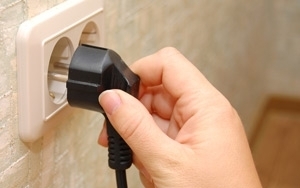Commentary
Battery Could Power Mobile Devices Using Body Heat
- by Erik Sass , Staff Writer @eriksass1, November 28, 2014
 While I rarely geek out over technology, this is so awesome it has to happen: engineers at the Massachusetts Institute of Technology are working on a battery that can
recharge using warmth from the human body. Among many other incredibly useful applications, this would obviously be a boon to mobile device users who would no longer have to cluster near electrical
outlets, stubbornly avoiding talking to each other.
While I rarely geek out over technology, this is so awesome it has to happen: engineers at the Massachusetts Institute of Technology are working on a battery that can
recharge using warmth from the human body. Among many other incredibly useful applications, this would obviously be a boon to mobile device users who would no longer have to cluster near electrical
outlets, stubbornly avoiding talking to each other.
According to a report in the Proceedings of the National Academy of Sciences, the battery -- which is around the size of a button --takes advantage of something called the “thermally regenerative electrochemical cycle,” which is almost certainly beyond my comprehension. The important thing is that it can charge itself between the temperatures of 68°F and 140°F, and then release the energy when it is exposed to lower temperatures (i.e., when you take it out of your pocket).
Although the battery isn’t efficient enough to power a mobile device yet, they hope to refine it with improved materials and system designs. The current (get it?) model is only 2% efficient, but ultimately they are aiming for 12% efficiency, which should supply ample juice for a mobile device, considering the amount of heat the human body generates.
The large-scale application of the self-charging battery is probably some way off, but in the meantime mobile device users could also benefit from a battery that absorbs energy faster so they don’t have to wait around for their mobile device to recharge. Towards that end an Israeli company called StoreDot has developed a battery that could store enough power for a day's mobile use in just 30 seconds.
The new fast-charging battery incorporates “nanodots,” or “bio-organic peptide molecules,” which, again -- no idea. Someone is taking this idea pretty seriously, because StoreDot has raised $48 million in two rounds of funding so far. The company is still working on shrinking the battery to a convenient size, but they hope to have it on the market by 2016.



